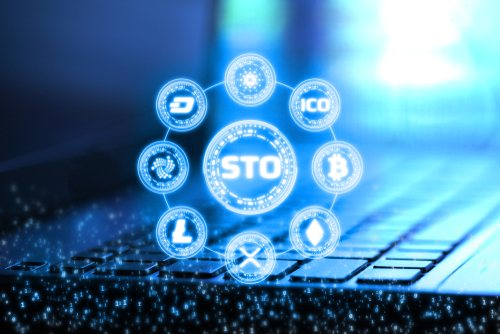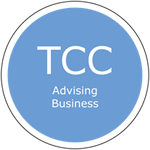
STRUCTURING A SECURITY TOKEN OFFERING
A successful security token sale is a complex, multi-faceted process involving detailed planning, financial modelling and regulatory compliance combined with an intensive PR and marketing campaign to engage the investor community and generate demand.
Tokenisable assets
Before considering the structure of a security token offering let’s look at the sort of assets that might be tokenised.
The five primary classes of assets that can be, and in many cases already have been, tokenised are:
- Asset-based tokens – works of art, real estate, commodities or luxury goods.
- Equity based tokens – common stock, additional paid-in capital, retained earnings, treasury stock etc.
- Debt-based tokens – unsecured debt, revolving debt, bonds, mortgages or loans etc.
- Fund-based tokens – shares from funds & Exchange Traded Funds.
- Derivative-based tokens – still largely a theoretical concept but a variety of models have been proposed:
- Options tokens give the tokenholders the right to buy or sell the token at a specified price on a specified date.
- Exchange Traded Fund (ETF) tokens represent the value of an underlying group of assets such as real estate, loans or private shares of different firms.
- Swap tokens exchange the cash flows of two different security tokens to serve as a hedge or insurance against market volatility.
- Mutual-fund tokens aggregate a pool of security tokens but will not be actively traded and only priced at predetermined intervals.
Who is likely to invest in the token?
As with any commodity, a successful token offering needs to be attractive to the market. So when considering tokenising an asset, financial security or income stream the most fundamental question is …… who is the target investor for the token? Everything that follows will be dependent on the answer to that question. Potential investors may include high net worth individuals, family offices, venture capital groups, private equity firms and large financial institutions. Each of these will have very different investment criteria which will require a different and specific strategy for both the initial token investment and the life span of the token. Having identified the target investor groups you can then structure the token offering to satisfy their investment criteria and run a marketing campaign designed to attract their interest.
Investment criteria
The general criteria that apply to attracting investors using a traditional method apply equally to launching an STO. Potential investors will conduct detailed analysis and due diligence on the usual business fundamentals and will want to see a solid business model with a capacity to deliver sustainable value over time. For a security token offering, however, there are additional criteria for attracting investors and they are italicised in the list below.
Business Model
- A clear value proposition and clearly defined competitive advantages
- Potential for future growth
- Valuable assets being tokenised
- A Minimum Viable Product (MVP), where applicable
- A clear vision and realistic roadmap with defined milestones
- A detailed go to market strategy
Team and partners in the ecosystem
- A comprehensive and skilled team with strong backgrounds, achievements and networks with the capacity to execute and deliver the project
- Partnerships in the STOs ecosystem (KYC/AML, custodians, wallets, crypto funds, secondary market actors such as platforms and market makers)
Financial Metrics
- Evidence of project viability based on accurate financial forecasts and revenue model
- A detailed and justifiable valuation of the company/asset
- Audited company accounts (especially for late-stage companies)
Tokenomics
- A token with value and underlying rights
- Detailed token sale metrics (discounts, soft cap, commitments, allocation, methods of payments, lockups etc.)
- If used, an appropriate issuance platform (token standards and smart contract features)
Legal structure
- Compliance with KYC/AML processes and applicable regulations
- A country of incorporation with appropriate STO regulations for the project
Tax
- Maximise the tax efficiency of the token offering
Marketing & PR
- Adapted marketing campaign according to the territory in which the STO is registered
- Strong marketing positioning and focused customer targeting including social media strategy
- An appropriate consumer acquisition strategy and long-term traction strategy
- Solid and comprehensive materials (including a whitepaper or investment deck and benchmark studies etc) to persuade and inform blockchain investors and institutional and retail investors
Focusing now on the italicised STO specific criteria.
Tokenomics
The value of each security token is based on the value of the underlying asset it represents and the number of tokens created. To fix the value of each token, the issuer must perform financial modelling to value the asset, decide the percentage of the asset in question to tokenise and finally determine the number of tokens to be issued. However, tokenisation of multi-owner assets can also occur. Established companies with shareholders may, for instance, wish to tokenise their cap tables. To do so, shareholders and the project team must discuss whether the equity will be converted, whether new share classes will be created, whether existing shareholders will have the option to swap their existing equity for tokens and so on. Each point must be reviewed with shareholders to decide how allocations and rights will evolve for them and to create new investment contract accordingly.
Token rights and revenues
The team must consider what rights will be offered to tokenholders e.g. voting rights and information rights (annual reporting, auditing reports, access to the company’s general meetings). Issuers must also determine the type of revenues that will be received by tokenholders and the frequency of allocation. Revenue can accrue to tokenholders in a number of ways, including:
- Dividend payments: a percentage of realised profits proportionate to the number of tokens owned.
- Token buybacks: the repurchase of tokens by issuers. This deflationary action reduces the number of tokens in circulation thereby increasing the scarcity of the token and thus increasing its price.
- Debt token coupons: investors receive coupons at a frequency and of a value that is predetermined in the debt contract.
Token sale
The project team must consider:
- Which payment currencies to accept. Fiat currency will be the primary means of payment for most STOs. Cryptocurrency (ETH and BTC) may also be accepted although this option will likely incur greater compliance costs.
- The length of the lock-up period. This will vary depending on the type of asset being tokenised. If the underlying asset is equity, it makes sense to include a vesting period whereas shares of funds will operate differently.
- The soft cap amount. If the project necessitates a soft cap, this should be based on the minimum viable costs of launching and sustaining the business until it is revenue positive.
Selection of token standards and smart contract features
Issuers must choose a blockchain and token standard that meets all legal, regulatory and governance requirements, exchange and liquidity standards while ensuring scalability and interoperability. If an STO platform is involved it will facilitate core functions including issuance, custody, KYC checks and secondary market trading. The most suitable platform for each STO depends on the asset being tokenised, underlying costs, the level of decentralisation required, investors targeted, jurisdictions, requirements for APIs, the desired user experience (UX) for the KYC and funding process and a number of other factors.
Legal structure
STOs must comply with a host of regulations and laws in accordance with the investor’s country or residence and the jurisdiction in which the company is incorporated.
Know your customer (KYC) and Anti-Money Laundering (AML) processes help to identify and verify the legitimacy of investors, protect issuers by preventing non-reputable persons from participating in the token sale and assist with compliance (e.g. reducing the risk of selling tokens to persons in countries that ban STO projects). Retail KYC/AML entails the collection of investor information including names, addresses, contact information and documents including a government-issued ID and proof of residence. Third- party accreditation letters or documents of wealth and assets may also be requested. Institutional KYC/AML entails the collection of fundamental information including the full legal name of the entity, registration numbers, primary contact information and so on, as well as documents identifying ultimate beneficial owners, signatories and board members. Entity accreditations also require documentation proving assets or regulatory licenses. Although KYC and AML are quite expensive processes and cannot guarantee the reliability of the information collected they are legally required and add significant protections for issuers.
Tax
Many token offerings will, by their nature, have international and cross-border tax implications. In the case of an asset backed token offering it may be possible to locate ownership of the asset in a territory with a tax regime that is favourable to the income or capital growth of the asset thus enhancing the attraction of the token offering to the potential investors and increasing its future value on a secondary market. Consideration should also be given to cross-border tax implications and impact of withholding taxes on the token project once launched and any available steps taken to minimise tax friction on both the token project and tokenholders.
STO regulations
Though STOs are legal in most countries, regulations vary significantly between jurisdictions. In the US any security must either be registered with the SEC or qualify for one of the available exemptions intended to accommodate different types of sales with different target investors. In the EU, the European Securities and Markets Authority (ESMA) has issued extensive guidance for investors and businesses and created exemptions for STO issuers from the obligation of drawing up a prospectus when fundraising falls below a certain threshold which are variable between EU nations. The regulations of individual member states are nuanced and should be deeply analysed before selecting a European nation in which to conduct an STO. The UK’s Financial Conduct Authority is due to announce (Summer 2019) details of its regulatory framework for cryptocurrencies and token offerings. Asia has a complex regulatory tapestry which is generally more rigorous than found in the USA and Europe. The differing frameworks can be highly exacting and in some regions financial authorities are completely hostile to blockchains start-ups.
Marketing & PR
Marketing campaigns can include roadshows, social media channels, email marketing, events and networking, press releases and a number of other outreach initiatives. A comprehensive and properly thought through marketing strategy is essential to increase awareness of the STO, build trust and stimulate investment. Advertising securities is highly regulated and teams should seek legal advice to ensure that their marketing and PR tactics are fully compliant. The issues include whether accredited or non-accredited investors can be targeted and the types of marketing/promotional efforts that can be used to solicit investors.
Conclusion
If you have a clear vision of where your business is headed, how it can benefit from tokenisation and are willing to see some of the value a token offering generates accruing to investors then a Security Token Offering may be right for you. Do your planning and research, prepare your checklist and then share your idea with the world.
Tim Carswell is a founding partner of Token360 – Global Advisor on Tokens
